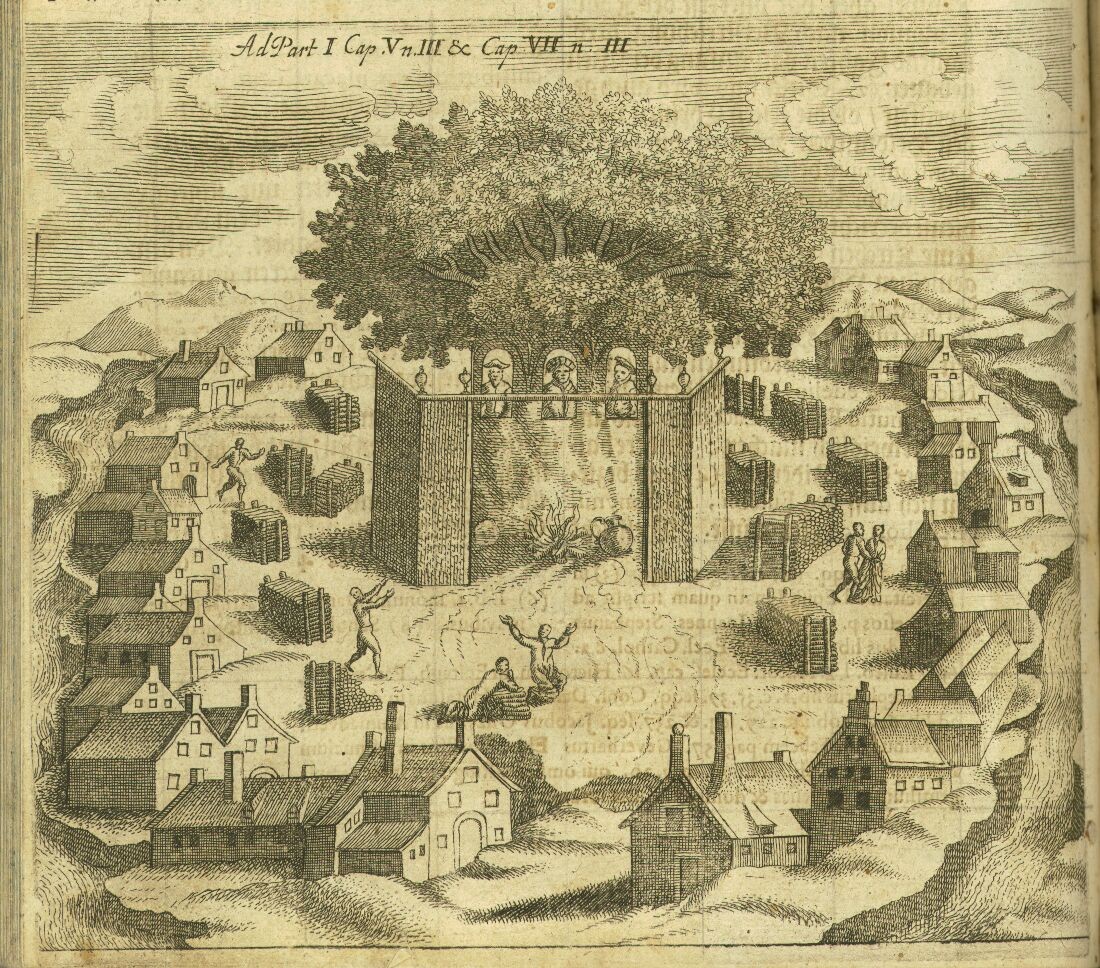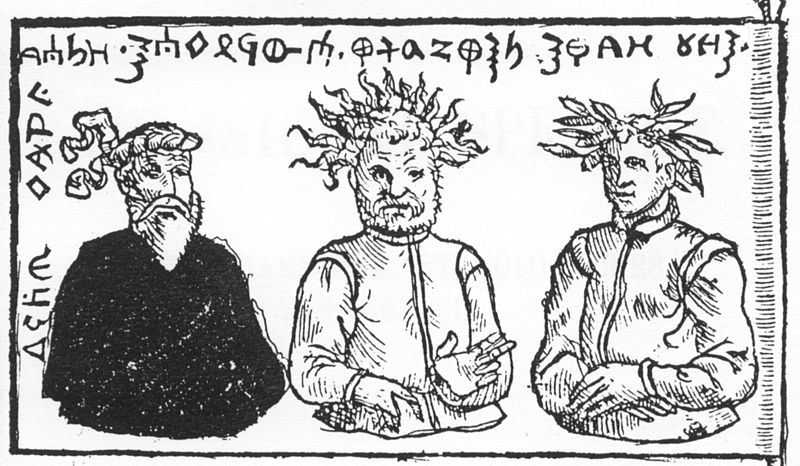|
Prussian Mythology
The Prussian mythology was a polytheistic religion of the Old Prussians, indigenous peoples of Prussia before the Prussian Crusade waged by the Teutonic Knights. It was closely related to other Baltic faiths, the Lithuanian and Latvian mythologies. Its myths and legends did not survive as Prussians became Germanized and their culture extinct in the early 18th century. Fragmentary information on gods and rituals can be found in various medieval chronicles, but most of them are unreliable. No sources document pagan religion before the forced Christianization in the 13th century. Most of what is known about Prussian religion is obtained from dubious 16th-century sources (''Sudovian Book'' and Simon Grunau). Historical background and sources The Teutonic Order, a crusading military order, began the Prussian Crusade in the 1220s. Their goal was to conquer and convert pagan Prussians to Christianity. The Knights built log and stone fortresses, which proved to be impregnable to the P ... [...More Info...] [...Related Items...] OR: [Wikipedia] [Google] [Baidu] |
Romuva Sanctuary
{{disambig ...
Romuva may refer to: * Romuva (temple), an ancient worship place in Old Prussia * Romuva (religion), a pagan movement in modern Lithuania * Lithuanian name for Pravdinsk, town in Kaliningrad Oblast, Russia * ''Romuva'', heaven in the philosophical writings of Vydūnas Wilhelm Storost, artistic name Vilius Storostas-Vydūnas (22 March 1868 – 20 February 1953), mostly known as Vydūnas, was a Prussian-Lithuanian teacher, poet, humanist, philosopher and Lithuanian writer, a leader of the Prussian Lithuani ... [...More Info...] [...Related Items...] OR: [Wikipedia] [Google] [Baidu] |
Kursenieki
The Kursenieki ( lv, kursenieki, kāpenieki, german: Kuren – 'Curonians'; lt, kuršiai; pl, Kuronowie pruscy – 'Prussian Curonians') are a nearly extinct Baltic ethnic group living along the Curonian Spit. "Kuršiai" refers only to inhabitants of Lithuania and former East Prussia that speak a southwestern dialect of Latvian. Some autochthonous inhabitants of Šventoji in Lithuania call themselves "kuršiai" as well. Confusion Kursenieki are often confused with the extinct Curonian Baltic tribe, as neighbouring ethnic groups called Kuršininkai/Kursenieki as ''Curonians'': in German, Latvian and Lithuanian, Kursenieki and the Curonian tribes are known by the same terms (''Kuren'', ''kurši'' and ''kuršiai'' respectively). In scientific Lithuanian literature, the name ''kuršininkai'' is used to distinguish them from the Curonian tribe. Similarly in Latvian ''kursenieki'' is used mostly exclusively by scientists to distinguish them from the Curonian tribe. On the ... [...More Info...] [...Related Items...] OR: [Wikipedia] [Google] [Baidu] |
Peckols
Peckols and Patollo (known under a multitude of different names) were gods in the pagan Prussian mythology who were worshiped by the Old Prussians. Most researchers believe that, despite varying names, Peckols and Patollo were probably the same god in charge of the underworld and the dead. It is usually described as an angry, evil spirit similar to the Lithuanian Velnias. ''Patollu'' was first mentioned in 1418 by Bishop of Warmia in a letter to the Pope. Chronicler Simon Grunau (1529) provided more vivid but dubious details about ''Patollo''. According to Grunau, ''Patollo'' was one of the three gods portrayed on the flag and coat of arms of King Widewuto and worshiped in the temple of Rickoyoto. He was portrayed as an old man with a white beard and a white headdress similar to a turban. He was a frightening and ruthless god of the dead who would haunt and taunt the living if they disobeyed their pagan priests or buried the dead without proper sacrifices to the gods. Many oth ... [...More Info...] [...Related Items...] OR: [Wikipedia] [Google] [Baidu] |
Romuva (temple)
Romuva or Romowe (also known as Rickoyoto in the writings of Simon Grunau) was an alleged pagan worship place (a temple or a sacred area) in the western part of Sambia, one of the regions of pagan Prussia. In contemporary sources the temple is mentioned only once, by Peter von Dusburg in 1326. According to his account, Kriwe-Kriwajto, the chief priest or "pagan pope", lived at Romuva and ruled over the religion of all the Balts. According to Simon Grunau, the temple was central to Prussian mythology. Even though there are considerable doubts whether such a place actually existed, the Lithuanian neo-pagan movement '' Romuva'' borrowed its name from the temple. Historical accounts According to Peter von Dusburg, writing in 1326, the name ''Romuva'' is derived from the word Rome. He describes the Kriwe as a powerful priest who was held in high regard by the Prussians, Lithuanians, and Balts of Livonia. His messengers were recognized by a certain rod or other insignia. He guarded th ... [...More Info...] [...Related Items...] OR: [Wikipedia] [Google] [Baidu] |
Widewuto
Widewuto (also ''Viduutus'', ''Vidvutus'', ''Witowudi'', ''Waidewut'', ''Vaidevutis'') was a legendary king of the pagan Prussians who ruled along with his elder brother, the high priest (''Kriwe-Kriwajto'') Bruteno in the 6th century AD. They are known from writings of 16th-century chroniclers , Simon Grunau, and Lucas David. Though the legend lacks historical credibility, it became popular with medieval historians. It is unclear whether the legend was authentically Prussian (i.e. recorded from Prussian mythology) or was created by Grunau (possibly inspired by Biblical Moses and Aaron), though Lithuanian researchers tend to support its authenticity. Names Widewuto's name is found in literature in different forms: Veijdenutus, Vydevutis, Vidowuto, Viduutus, Waidewut, Wejdewut, Wenedut, Widewuto, Widewutte, Widiwutus, Wydowudo, Wydowudus, Widowuto, Wydowuto, Widowutus, Witoud, Witoudo, Witouito, Witowudus, Witowuto, Wotowudo, Vaidevutis (modern Lithuanian emendation). As for his bro ... [...More Info...] [...Related Items...] OR: [Wikipedia] [Google] [Baidu] |
Synod
A synod () is a council of a Christian denomination, usually convened to decide an issue of doctrine, administration or application. The word ''wikt:synod, synod'' comes from the meaning "assembly" or "meeting" and is analogous with the Latin word meaning "council". Originally, synods were meetings of bishops, and the word is still used in that sense in Roman Catholic Church, Catholicism, Oriental Orthodoxy and Eastern Orthodoxy. In modern usage, the word often refers to the governing body of a particular church, whether its members are meeting or not. It is also sometimes used to refer to a church that is governed by a synod. Sometimes the phrase "general synod" or "general council" refers to an ecumenical council. The word ''synod'' also refers to the standing council of high-ranking bishops governing some of the autocephaly, autocephalous Eastern Orthodox Church, Eastern Orthodox churches. Similarly, the day-to-day governance of patriarchal and major archbishop, major arch ... [...More Info...] [...Related Items...] OR: [Wikipedia] [Google] [Baidu] |
Wilhelm Mannhardt
Wilhelm Mannhardt (March 26, 1831, Friedrichstadt – December 25, 1880, Danzig) was a German mythologist and folklorist. He is known for his work on Germanic mythology, on Baltic mythology, and other pre-Christian European pantheons; and for his championing of the solar theory, namely in the early years of his career, under the influence of Jakob Grimm Jacob Ludwig Karl Grimm (4 January 1785 – 20 September 1863), also known as Ludwig Karl, was a German author, linguist, philologist, jurist, and folklorist. He is known as the discoverer of Grimm's law of linguistics, the co-author of th .... Later on, Mannhardt focused more on vegetation spirits from an evolutionist point of view, namely the primitive tree cult and its later developments.Rosa, Frederico Delgado, 2018« Avant Le Rameau d’Or : biographie de Wilhelm Mannhardt, précurseur oublié de James Frazer »in Bérose, Encyclopédie en ligne sur l’histoire de l’anthropologie et des savoirs ethnographiques, Par ... [...More Info...] [...Related Items...] OR: [Wikipedia] [Google] [Baidu] |
Duchy Of Prussia
The Duchy of Prussia (german: Herzogtum Preußen, pl, Księstwo Pruskie, lt, Prūsijos kunigaikštystė) or Ducal Prussia (german: Herzogliches Preußen, link=no; pl, Prusy Książęce, link=no) was a duchy in the Prussia (region), region of Prussia established as a result of secularization of the Monastic Prussia, the territory that remained under the control of the State of the Teutonic Order until the Protestant Reformation in 1525. Overview The duchy became the first Protestant state when Albert, Duke of Prussia formally adopted Lutheranism in 1525. It was inhabited by a German, Polish (mainly in Masuria), and Lithuanian-speaking (mainly in Lithuania Minor) population. In 1525, during the Protestant Reformation, in accordance to the Treaty of Kraków, the Grand Masters of the Teutonic Knights, Grand Master of the Teutonic Knights, Albert, secularization, secularized the order's prevailing Prussian territory (the Monastic Prussia), becoming Albert, Duke of Prussia. As the ... [...More Info...] [...Related Items...] OR: [Wikipedia] [Google] [Baidu] |
Monastic State Of The Teutonic Knights
The State of the Teutonic Order (german: Staat des Deutschen Ordens, ; la, Civitas Ordinis Theutonici; lt, Vokiečių ordino valstybė; pl, Państwo zakonu krzyżackiego), also called () or (), was a medieval Crusader state, located in Central Europe along the southeastern shore of the Baltic Sea. It was formed by the knights of the Teutonic Order during the 13th century Northern Crusades in the region of Prussia. The Livonian Brothers of the Sword merged in 1237 with the Teutonic Order of Prussia and became known as its branch, the Livonian Order, while their state (''Terra Mariana'') became a part of the Teutonic Order State. At its greatest territorial extent, in the early 15th century, it encompassed Chełmno Land, Courland, Gotland, Livonia, Neumark, Pomerelia (Gdańsk Pomerania), Prussia and Samogitia, i.e. territories nowadays located in Estonia, Latvia, Lithuania, Germany, Poland, Russia, and Sweden. Following the battles of Grunwald in 1410 and Wilkomierz in 143 ... [...More Info...] [...Related Items...] OR: [Wikipedia] [Google] [Baidu] |




